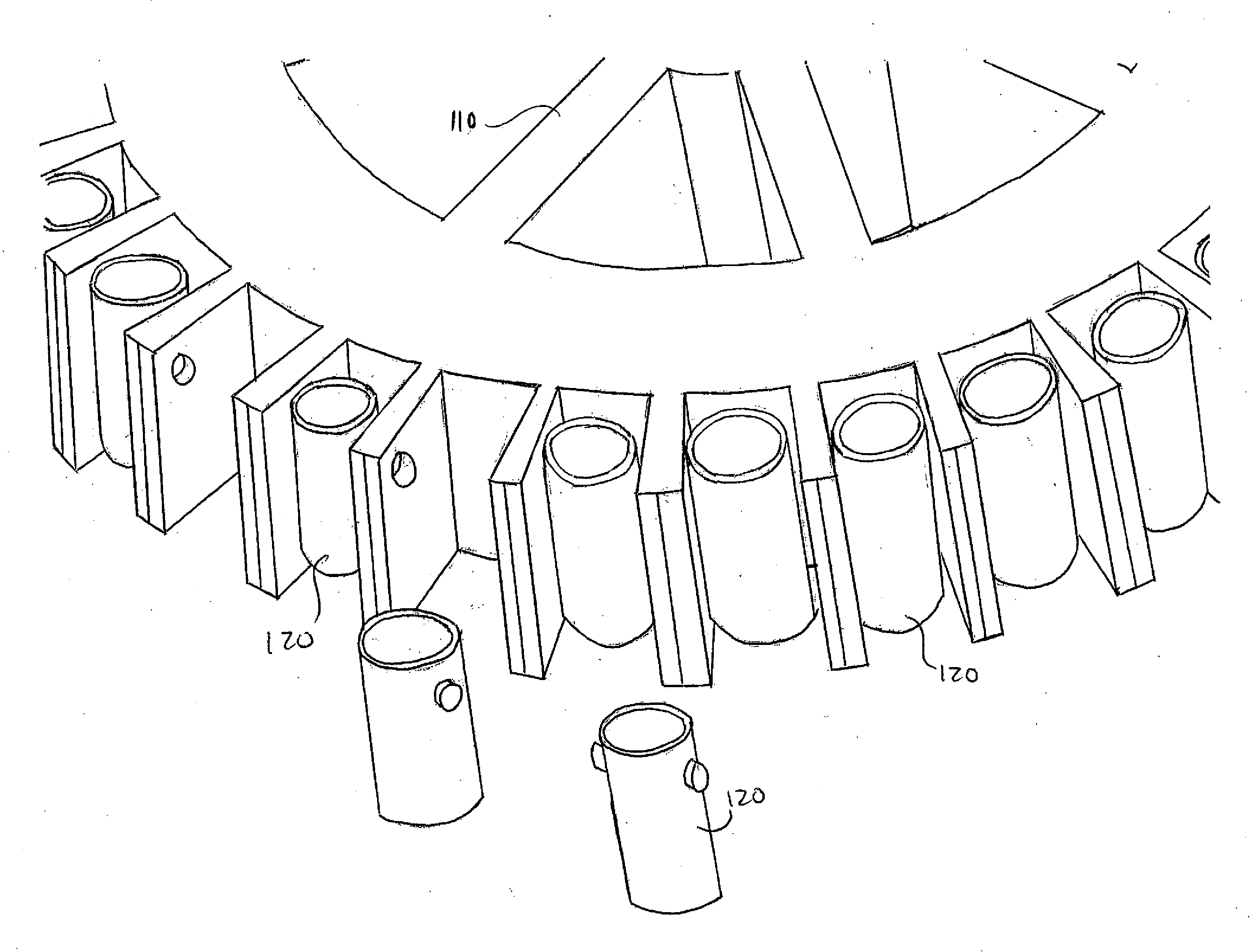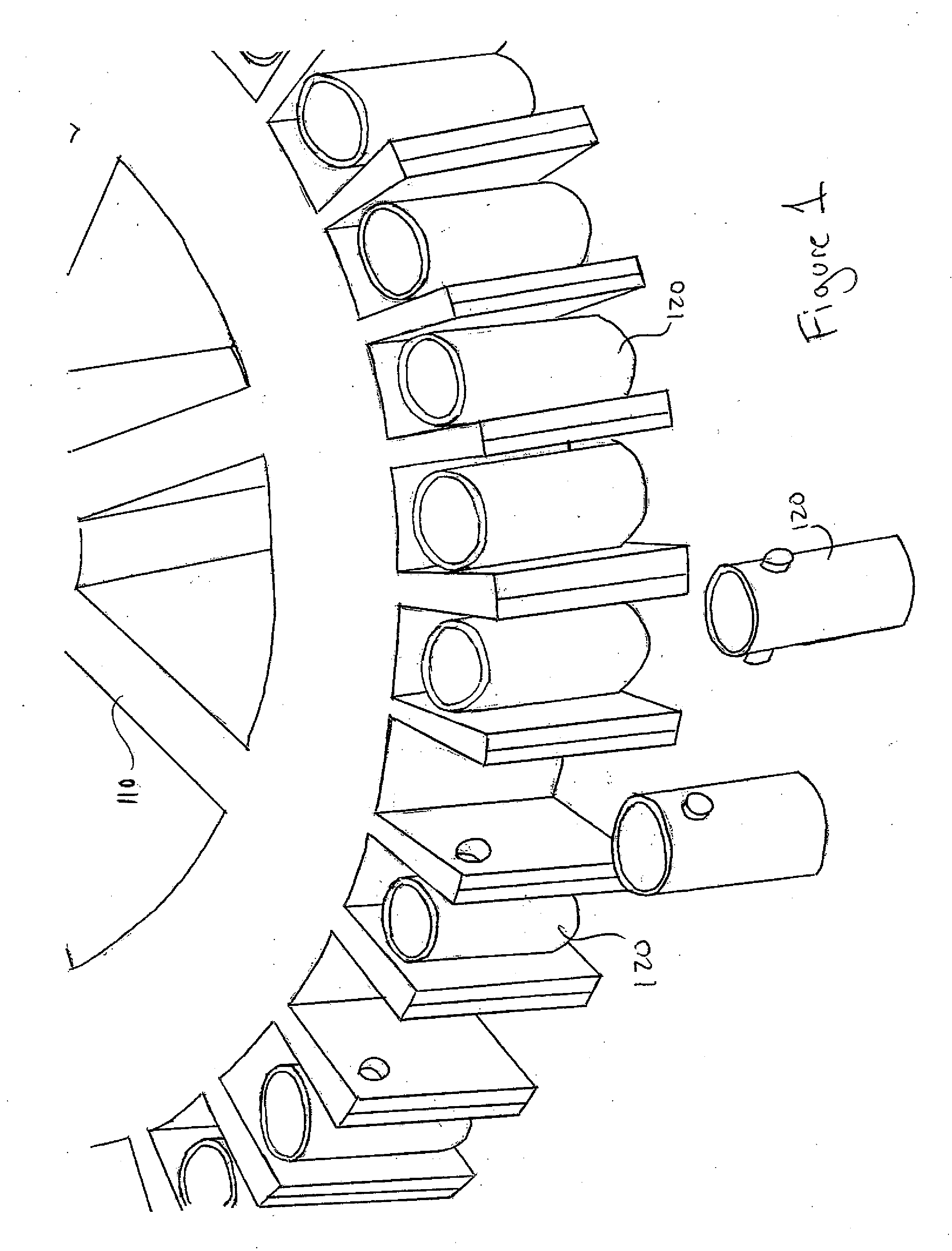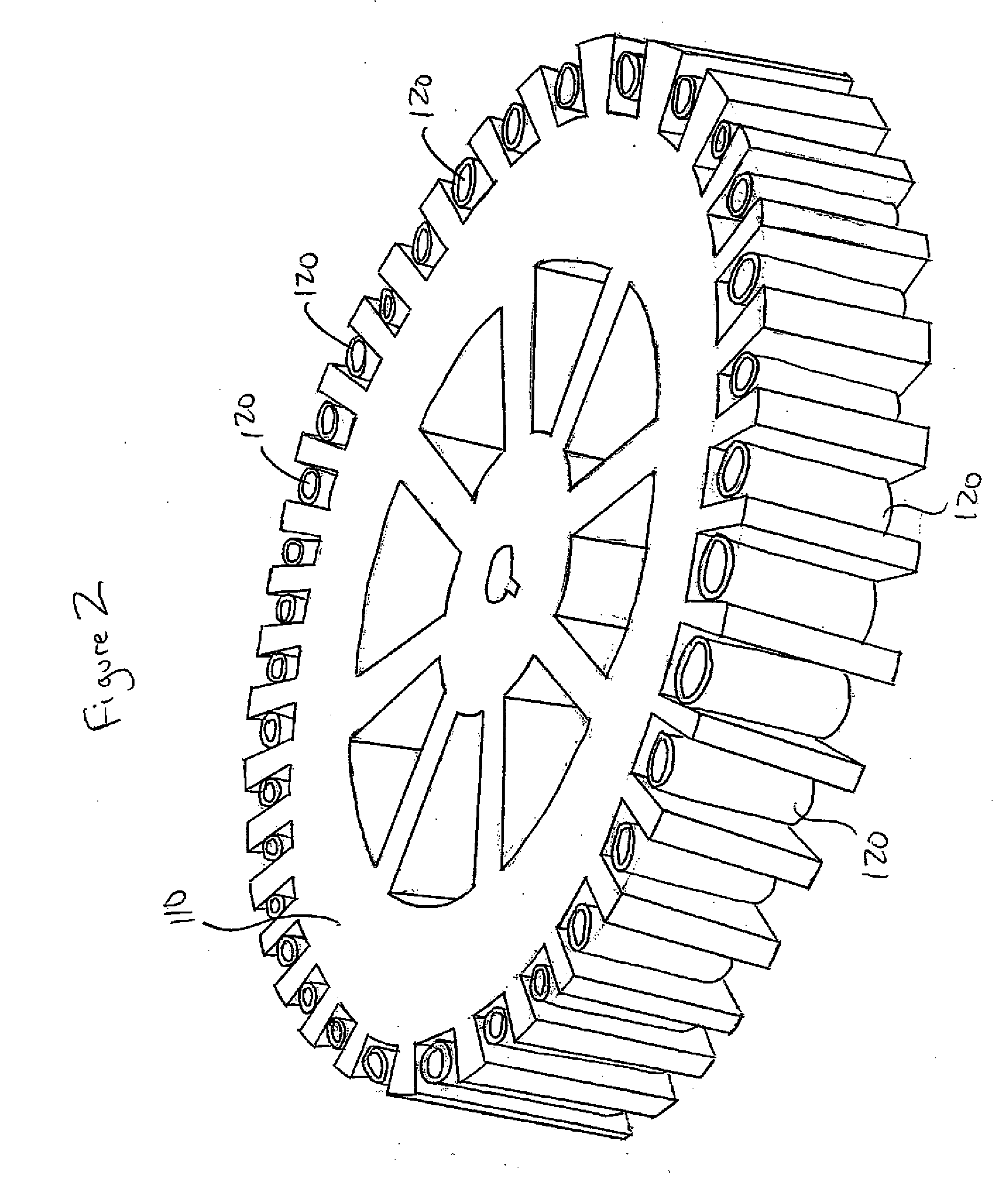Testing for Blood Group Immunological Reaction Without the Use of Anti-Human Globulin
- Summary
- Abstract
- Description
- Claims
- Application Information
AI Technical Summary
Benefits of technology
Problems solved by technology
Method used
Image
Examples
Embodiment Construction
Forward ABO Grouping and Rho (D) Typing
[0017]In one embodiment, the method of the present invention is carried out In solid phase on a solid surface capable of supporting an immunological reaction. Various materials provide adequate solid surfaces acceptable for the present method. Examples of acceptable substrates include beads, test tubes, sheets, strips, microtiter plates, and centrifuge heads 120 themselves (for use with centrifuge 110) such as the one shown In FIGS. 1, 2, and 3 all made of: polystyrene, polyvinylchloride, XPS, HIPS, SAM, ABS, PMMA, MBS, RPVC, CPVC, PB, LDPE, LLDPE, HDPE, HMWHDPE, LCP, PAS, PAEK, PC / ABS, PP / TALC, PP / GLASS, EVA, IN, CP, PEEK, PEI, PEKEKK, PES, POM, TPV, TPO, TP, PA6, PA66, PPA, PPE, PPS, PSO, PA11, PA12G, PA66M, PBT, PUR, TPI, PP, PP / CO, PET, PETG, PC, PVDF or any other applicable material. The wells may have flat bottom, U-shaped, or V-shaped bottoms. It is preferable to use a polystyrene centrifuge head, and wells having a U-shaped well, but no...
PUM
 Login to View More
Login to View More Abstract
Description
Claims
Application Information
 Login to View More
Login to View More - R&D
- Intellectual Property
- Life Sciences
- Materials
- Tech Scout
- Unparalleled Data Quality
- Higher Quality Content
- 60% Fewer Hallucinations
Browse by: Latest US Patents, China's latest patents, Technical Efficacy Thesaurus, Application Domain, Technology Topic, Popular Technical Reports.
© 2025 PatSnap. All rights reserved.Legal|Privacy policy|Modern Slavery Act Transparency Statement|Sitemap|About US| Contact US: help@patsnap.com



